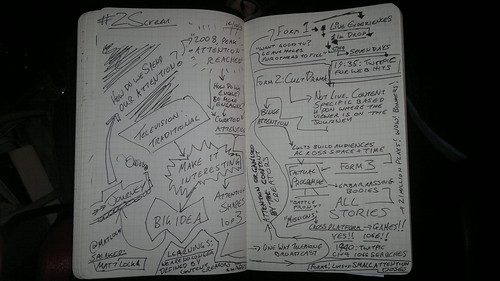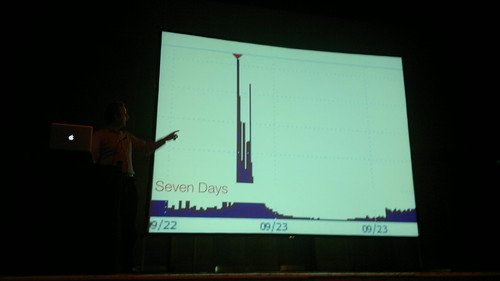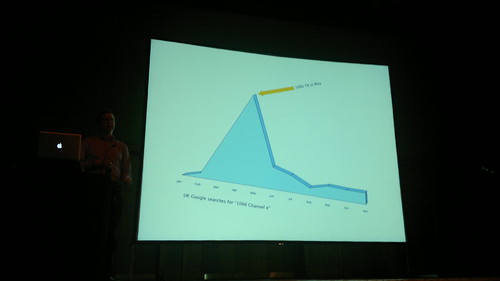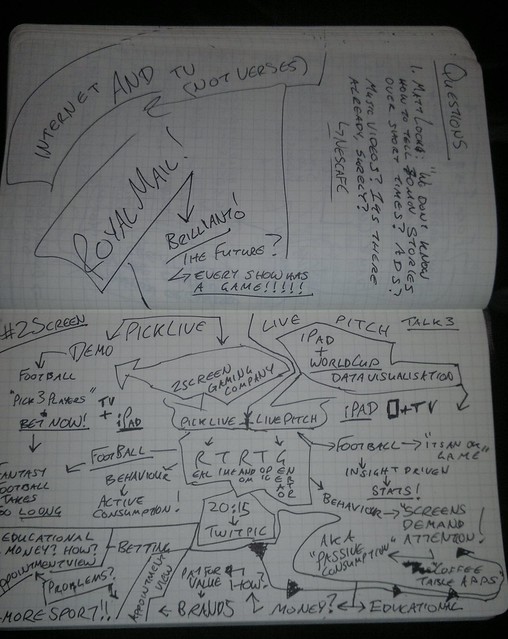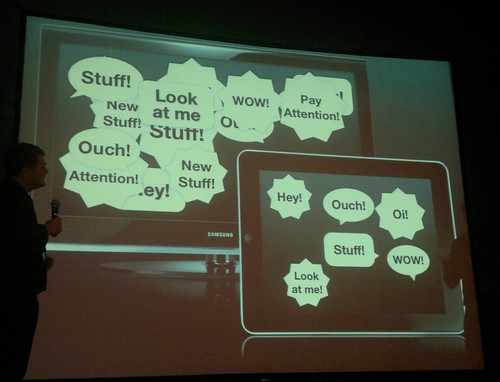Example one (real)
The Look for Longer campaign is a neat little competition from CBS Outdoor to encourage interaction with outdoor advertising. The game itself is quite cute, there’s 75 different tube stations hidden on a poster and you have to guess them all. Simple, right? Perfect brain fodder for London’s challenge-hungry commuters.
You can see the full poster on the campaign website, the version that I’m showing above however highlights quite a nice piece of joined-up thinking from the chaps behind the activity. Conversations around this sort of thing would normally go like this:
‘OK, so we’ve got our posters’
‘Yup!’
‘Do they have a clear call to action? Something like, ‘Text us on this number now!’ or similar?’
‘Yup!’
‘OK, so where are these posters going again?’
‘On the Underground.’
‘OK. Then make sure we add a QR code too…’
‘Straight away!’
—- I’m not kidding.
But not this time ’round, oh no. This time the copywriters and creatives have actually applied context to their work and seeing this kind of relevant and in situ call to action actually put a smile on my face. Smart thinking tends to have that affect on me.
More of this please.
Example two (not real)
Walking onto the platform at Maida Vale back in July earlier this year, I was greeted with this fairly awesome poster for The Amazing Spider-Man. Now while the film wasn’t exactly awesome, the outdoor campaign really could’ve been.
Literally the first thing I thought when I saw this poster was ‘How cool would it be if this was an augmented reality (AR) execution?’. I walk onto the platform and the poster is exactly how you see it now except there’s no Spider-Man in it.
Instead, you download the AR app, hold up your cameraphone and voila, there’s Spidey, crawling around the other side of the platform on the underground.
Wouldn’t be ace if the call to action was something like ‘Seen The Amazing Spider-Man yet? Connect to Virgin Wifi and download app X to see him on this poster right now’ or, better yet, have the app on the Virgin Wi-Fi splash page.
I know a little bit about a little bit when it comes to AR markers (and marker-less markers too) and I’ve always thought you could do something cool with the actual tracks themselves (health and safety, what?) but now there’s internet down there, a whole new world of integrated marketing is wide open.
WiFi on the Underground is free until the end of this year.
Who’s going to innovate next?






